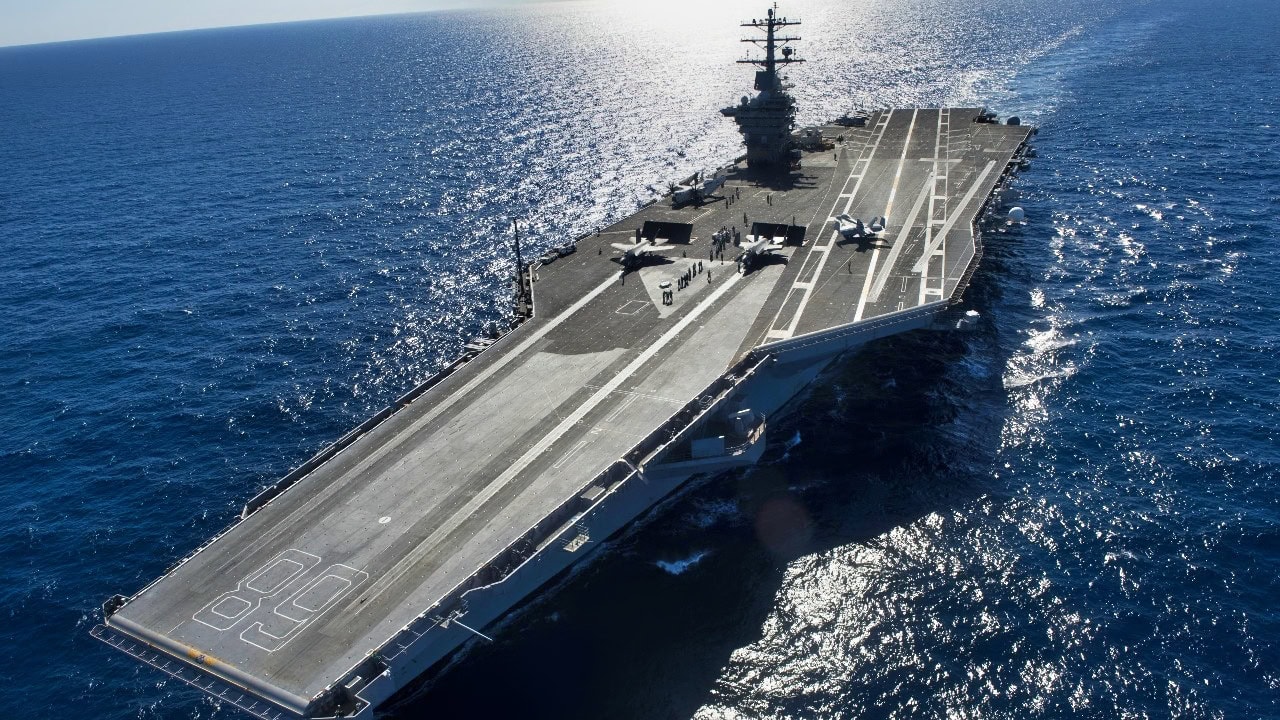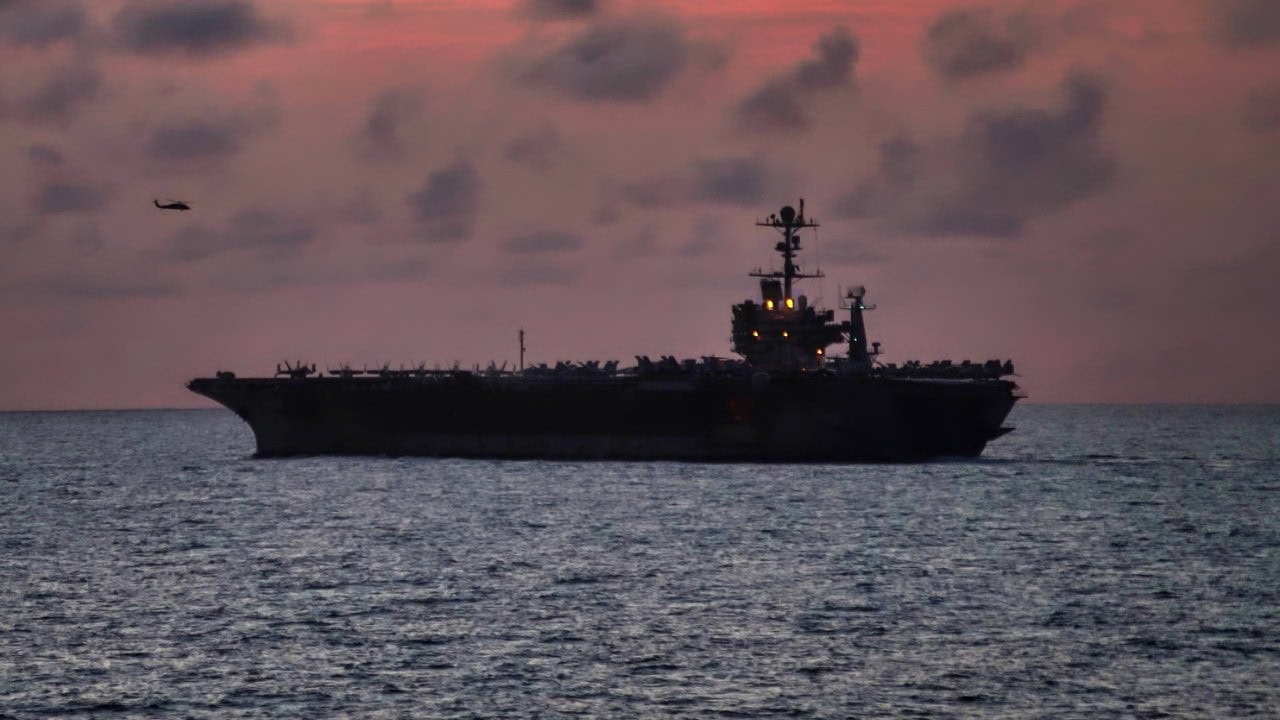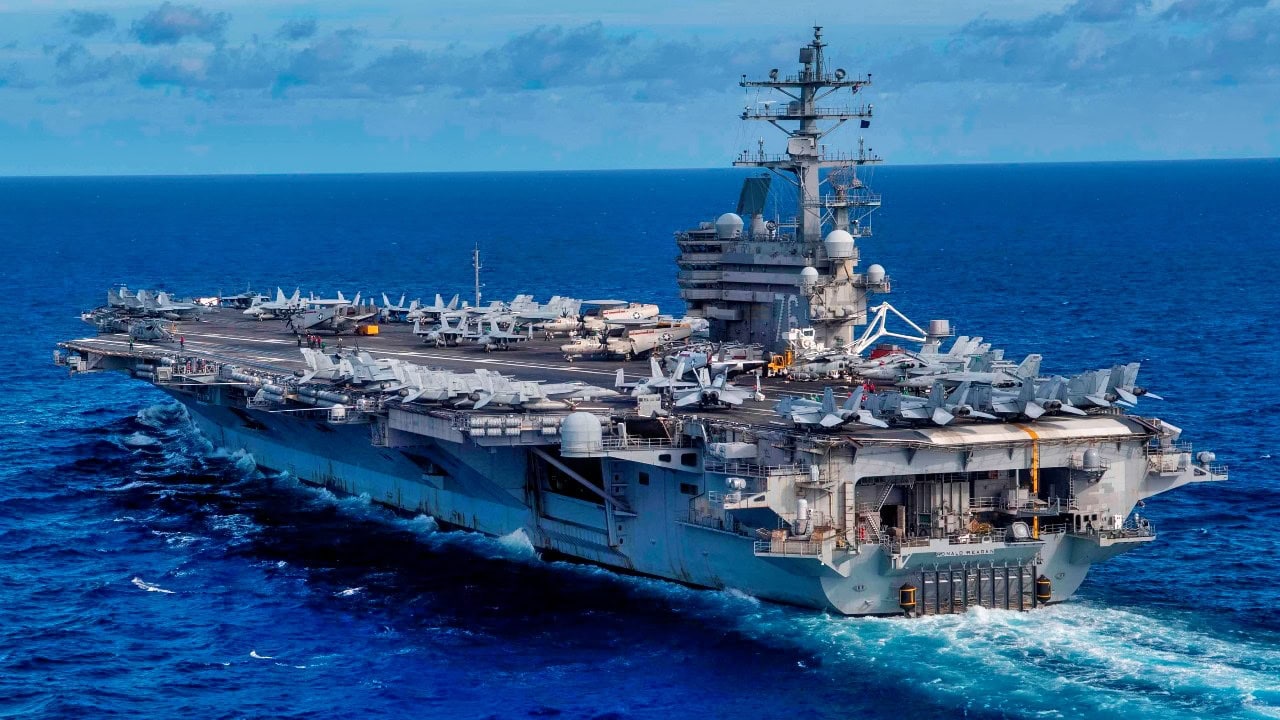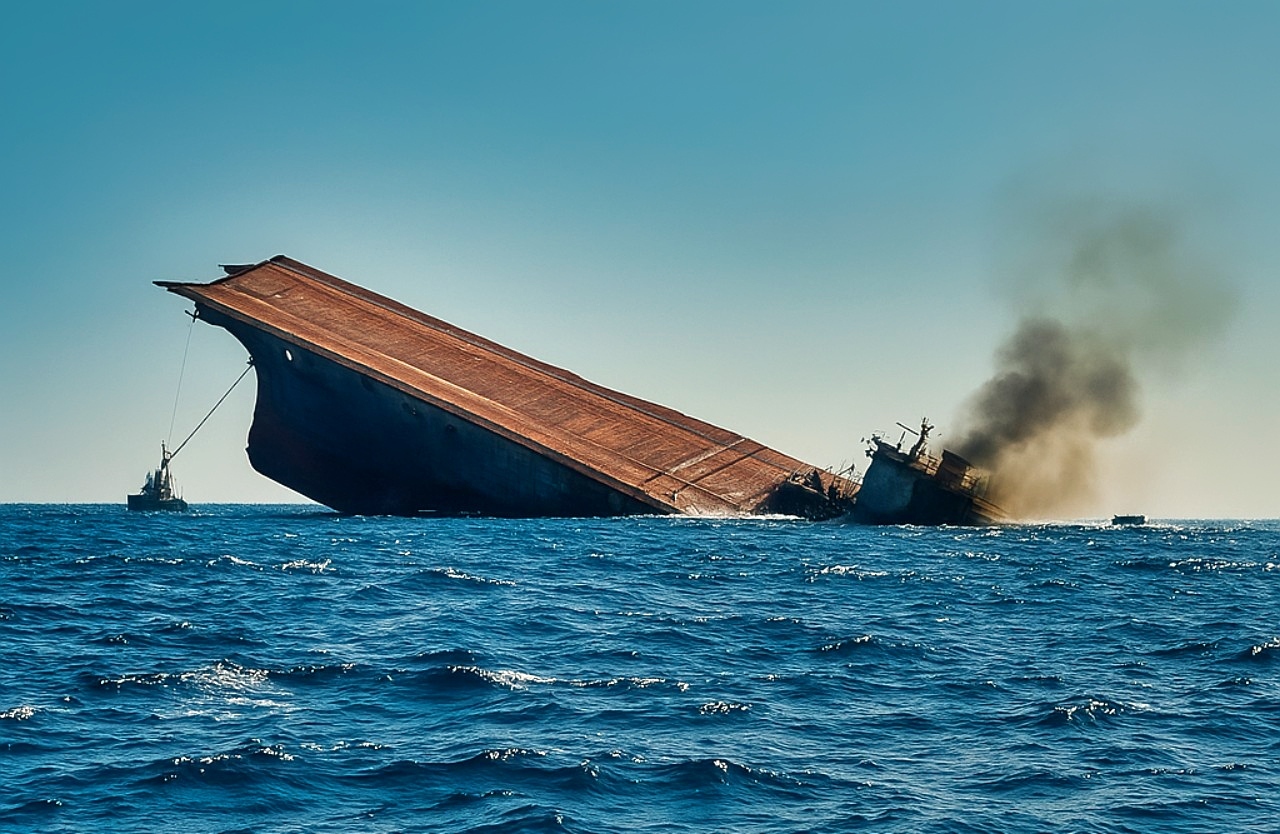United States Navy carrier aviation boasts a potent suite of offensive ballistic weaponry. Thankfully, aircraft carriers generally operate farther out to sea, preferring the open ocean to tight littoral waters closer to shore.
The Carrier-Killer Missile Threats
However, as part of the United States Central Command’s recent concentration of forces in the Middle East, a significant number of US Navy warships have sailed from the Indo-Pacific and extended deployments in the Middle East to support operations against the Houthi rebels in Yemen.
As part of that deployment, two Carrier Strike Groups, with aircraft carriers as their centerpiece, have been deployed somewhat closer to shore than they typically would be. According to USNI News, a naval publication, the Carl Vincent Carrier Strike Group, en route to the Middle East for at least the last week or more, is now in the Indian Ocean. Likewise, the Harry S. Truman Carrier Strike Group extended its previous deployment to support an ongoing American strike campaign against the Houthi rebels.
The Island Connection
As a part of the United States’ ongoing offensive against the Iran-backed Houthi rebels in Yemen, the United States has massed forces at Diego Garcia, a British-controlled island in the Indian Ocean. To that end, there are at least six, and potentially seven, B-2 Spirit stealth bombers stationed at the island, readied to carry out strikes against the rebels.
The bombers have also been joined by myriad support aircraft, including C-17 transport support aircraft, and other logistics and support aircraft, including air-to-air refueling tanker aircraft. F-35s have also been reportedly scrambled from other theaters in support of that mission.
Denied Access and the Carrier-Killer Weapons
The anti-ship missiles in possession of the Houthi rebels have been of concern. Still, that concern has been outweighed by the defensive capabilities of the American Carrier Strike Groups arrayed against them. However, China possesses significantly more capable weaponry than the Yemeni rebels.
In particular, significant standoff weaponry like the DF-20D and the DF-26B missiles could pose a serious threat to American carrier strike groups, in part thanks to the Chinese saturation strategy against American surface vessels.
Closer to the Chinese mainland and within range not only of ballistic missiles of various kinds but also in combination with land-based and air-based targeting radars and space-based near-real-time satellite assets, the survival odds of the aforementioned carrier strike group diminish.
Naval Aviation
In place of standing close to shore, aircraft carrier wings leverage the long-range strike capabilities afforded by their organic carrier wings against both enemy aviation and surface vessels. Today’s technology means that carrier aviation heaves standoff munitions against targets rather than going on more conventional bombing runs.
Ship-based munitions like the Tomahawk and Harpoon, both workhorses of the Cold War that are still in production and service today, are present potent strike capabilities that would complicate the calculus of any offensive against a carrier strike group, regardless of how sophisticated.
One of the most potent assets and edges that the United States Navy retains against all adversaries, including both the Chinese and the Russians, is its underwater capabilities: the United States Navy’s submarines.
In particular, the US Navy’s Virginia-class submarines are some of the most difficult-to-detect submarines in the world. They possess a potent strike capability, afforded by their extensive array of Tomahawk cruise missiles.
Weaknesses
One of the few potential weaknesses posed to the US Navy carrier strike group is air-to-air refueling in highly contested environments, particularly those where conventional or non-stealthy aircraft could struggle to survive.
Though the United States possesses the largest tanker force in the world, many of its airframes are, in essence, modified civilian airliners optimized for ferrying fuel but not ideal for operations in highly contested aerial environments.

Ford-Class. Image Credit: Creative Commons.
Though this was not a shortcoming in the environments of previous American conflicts, particularly in the Middle East in Iraq and Afghanistan, the American tanker fleet’s longevity against a peer rival—China—is an open question.
Further complicating matters is the Trump administration’s recent acquisition of the F-47 sixth-generation fighter. While no doubt necessary to retain a technological edge over United States adversaries, that program is projected to cost a significant amount of money and may eat into funds allocated for other US Air Force programs. The budget issue raises questions about the tanker fleet, which is potentially the Achilles heel of the United States Air Force.

USS John C. Stennis Aircraft Carrier. Image Credit: Creative Commons.
The Carrier-Killer Challenge Won’t Go Away
China’s expansion of its anti-ship missile arsenal is significant and complicates the calculus of wartime planning for the United States Navy. But, by staying off-shore and further away from the Chinese coast, the Carrier Strike Groups and, in particular, US Navy aircraft carriers could ensure a degree of safety. The offensive firepower of US Navy aviation should also not be underestimated. Given the multi-layered defensive protection afforded by a Carrier Strike Group’s surface assets, they may be a harder nut to crack than anticipated.

SOUTH CHINA SEA (June 16, 2021) The Navy’s only forward-deployed aircraft carrier USS Ronald Reagan (CVN 76) transits the South China Sea. Reagan is part of Task Force 70/Carrier Strike Group 5, conducting underway operations in support of a free and open Indo-Pacific. (U.S. Navy Photo by Mass Communication Specialist 1st Class Rawad Madanat)
About the Author: Caleb Larson
Caleb Larson is an American multiformat journalist based in Berlin, Germany. His work covers the intersection of conflict and society, focusing on American foreign policy and European security. He has reported from Germany, Russia, and the United States. Most recently, he covered the war in Ukraine, reporting extensively on the war’s shifting battle lines from Donbas and writing on the war’s civilian and humanitarian toll. Previously, he worked as a Defense Reporter for POLITICO Europe. You can follow his latest work on X.

